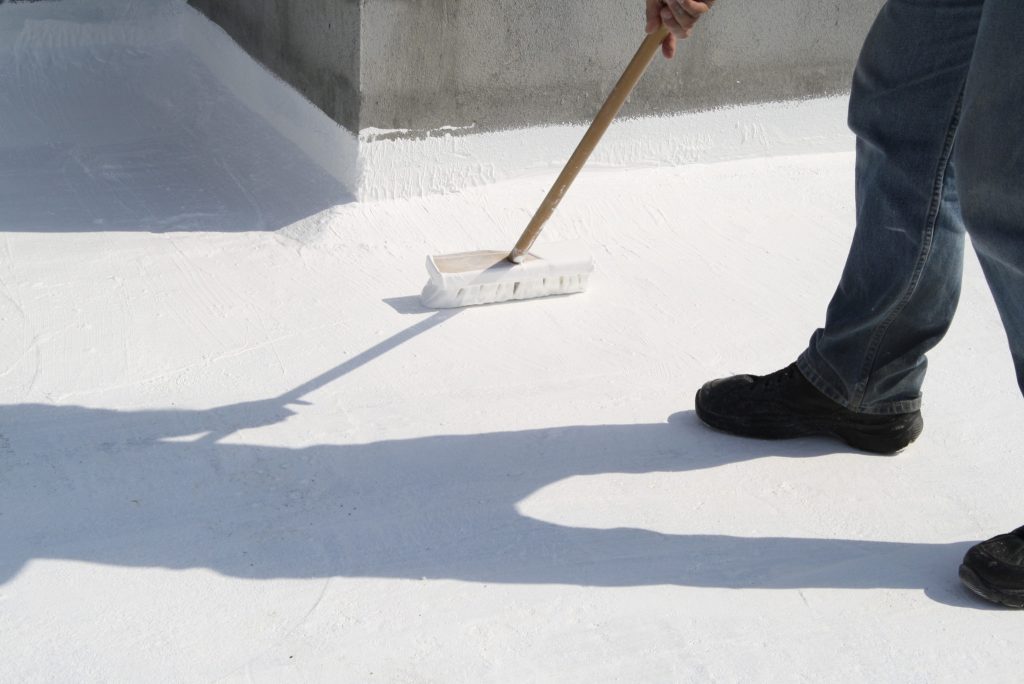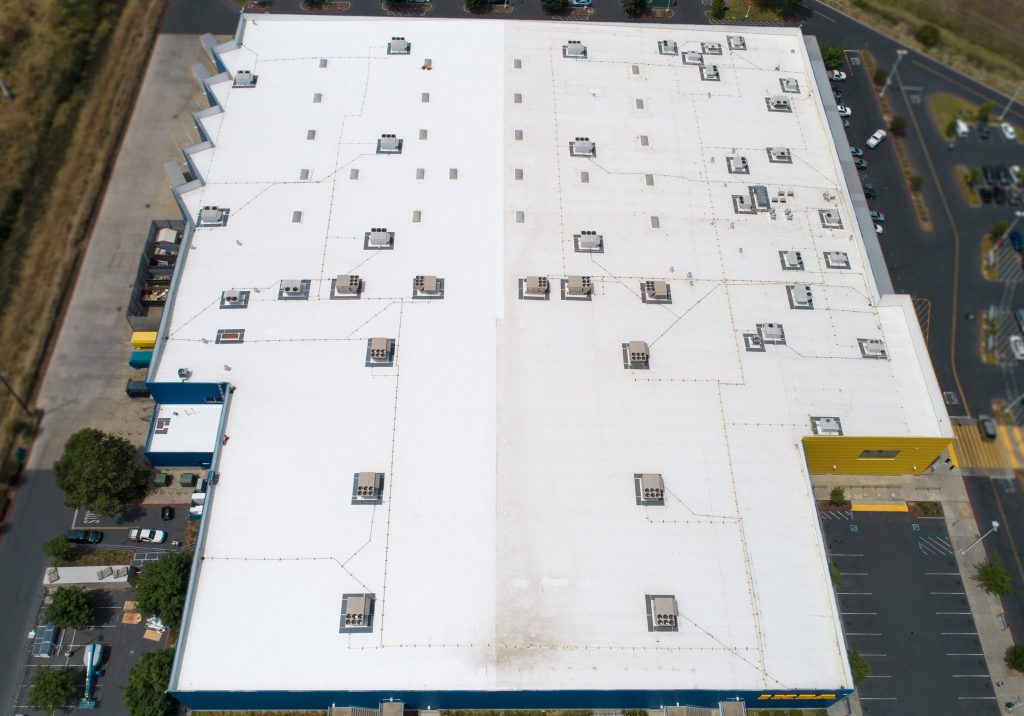With every commercial building, there comes a time when maintenance will be needed, sometimes even major repairs. Among those repairs the topics of reroofing and applying a roof coating comes up. How do we know which is ultimately the best option? Read below to learn more about these processes.
What’s The Difference?
Roof Coatings
Coatings are a fully adhered, fluid-applied roofing system used for roof maintenance or repair. Typically, roof coatings are installed on top of an existing roof membrane –both singly ply and built-up cap sheet– and are either rolled on or sprayed on.
Reroofing
Reroofing is a process that has also has two options. The first is completely removing the existing assembly down to the roof deck. After removal, installing a new roofing membrane occurs. The second option is roofing over an existing system with a new roofing membrane.

When To Use Roof Coatings
Oftentimes roof coating and reroofing are thought of as alternative options to each other. In reality, the two methods are meant for different situations. Roof coatings are used on top of an existing roof, in the condition that there are no leaks or major issues with that underlying roof. Roof coatings should take place after a thorough inspection of the existing roof, and a moisture detection survey. Without a proper inspection, applying a roof coating to a roof could essentially grant no benefits. One thing to keep in mind is that roof coatings are only as good as the roof beneath them.
Benefits that can come with roof coatings are:
- Quick application
- Extends existing roof life
- Reduce energy consumption
- Increased waterproofing
- Renewable protection
- Possible Tax benefits

When To Reroof
Reroofing can at times involve complete removal of the existing roof down to the bare deck, but in the long run, yields numerous benefits to the building owner, tenants, property managers, and the building itself. Reroofs are necessary when the existing system is beyond the point of repair or maintenance. This could mean that there is substantial water damage, weakened or worn-out materials, as well as an outdated system that isn’t yielding the energy efficiency possible. In many cases, the existing roof and underlying structure can be inspected, and if found to be free of moisture and dry rot, a new roof system can be installed directly over the old one, saving the money and mess associated with a tear-off.
Benefits that can come with reroofs are:
- Increased energy efficiency
- Long term no-dollar-limit labor and material warranties
- Roof membranes that are manufactured in a factory with exact thicknesses and specifications, and not subject to inconsistencies possible when workmen apply liquid coatings with rollers or sprayers
- Increased building lifespan
- Less frequent maintenance required
What To Consider
As with all repairs or maintenance, it is important to always have a certified, professional roofing contractor inspect your commercial roof before any proper assessment can take place. Before going forward with any contractor, here are a few points to consider:
- Warranty and what exactly it covers or excludes
- Length of time for the job—What size crew will they dedicate
- Costs
- Is the contractor insured?
- How established is the contractor?
- Is the contractor reputable?
- Is the contractor certified with the materials being used?
- Value—Is the price fair for what is being offered?
We’re Here To Help
Being in the commercial roofing industry for over 28 years, our team at Kodiak has a deep passion for providing the best support to all who manage, own, work, or even live under a commercial roof. If you have any additional questions about commercial roofs, reroofing, or roof coating, feel free to reach out to our team by clicking here, we’re happy to help. You can also visit our social media pages to see more of who we are.

